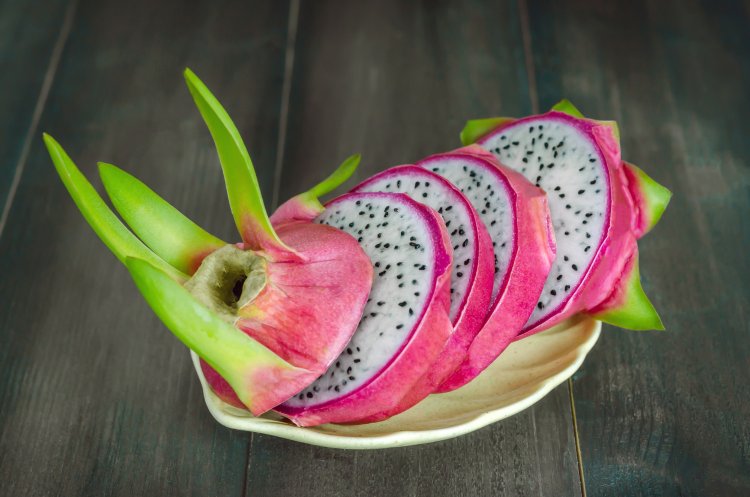Dragon Fruit: A Tropical Marvel of Flavor and Nutrition
Dragon fruit, also known as pitaya or pitahaya, is a fascinating tropical fruit renowned for its vibrant appearance and refreshing taste. Belonging to the cactus family (Hylocereus genus), dragon fruit comes in several varieties distinguished by their skin and flesh colors, making it a visually appealing addition to both culinary dishes and fruit platters.

Appearance and Varieties
There are primarily three types of dragon fruit commonly found:
-
Hylocereus undatus: Known for its pink skin and white flesh with tiny black seeds.
-
Hylocereus costaricensis: Has red skin with red flesh and tiny black seeds.
-
Hylocereus megalanthus: Features yellow skin with white flesh and tiny black seeds.
The fruit's outer skin is covered in scales that give it a dragon-like appearance, hence its name. Inside, the flesh is mildly sweet with a texture reminiscent of kiwi due to the small edible seeds scattered throughout.
Flavor Profile and Culinary Uses
Dragon fruit offers a delicate, subtly sweet flavor that pairs well with various fruits and complements both sweet and savory dishes. Its flesh can be scooped out and eaten fresh, added to fruit salads for a tropical twist, blended into smoothies for a refreshing treat, or used as a topping for desserts like ice cream and yogurt. Some culinary enthusiasts even use it in cocktails or as a decorative garnish due to its striking appearance.
Nutritional Benefits
Beyond its aesthetic and culinary appeal, dragon fruit packs a nutritional punch. It is rich in antioxidants such as vitamin C, which supports immune function and helps combat free radical damage in the body. The fruit also contains several B vitamins, essential for energy metabolism, and dietary fiber, which aids digestion and promotes a feeling of fullness.
Health Benefits
Regular consumption of dragon fruit may contribute to overall health and well-being. The antioxidants in dragon fruit have anti-inflammatory properties that can potentially reduce the risk of chronic diseases. Its high fiber content supports gastrointestinal health by promoting regular bowel movements and improving nutrient absorption.
Cultivation and Availability
Dragon fruit thrives in tropical and subtropical climates, primarily in regions such as Southeast Asia, Central and South America, and parts of Australia. The fruit grows on cactus plants that bloom fragrant flowers, which develop into the distinctive dragon fruit after about 30-50 days. Due to its growing popularity, dragon fruit is increasingly cultivated in regions with suitable climatic conditions and is exported to markets worldwide.
In conclusion, dragon fruit stands out not only for its captivating appearance but also for its nutritional benefits and culinary versatility. Whether enjoyed fresh, blended into beverages, or incorporated into various dishes, this tropical fruit offers a unique sensory experience and a host of potential health advantages. As global demand continues to rise, dragon fruit remains a symbol of exotic flavor, vibrant color, and nutritional richness in the world of tropical fruits.
Disclaimer: The information provided in this article is for educational purposes only and should not be considered medical advice. If you have any health concerns or are experiencing symptoms, it is important to consult with a healthcare professional, such as a doctor or clinic, for proper diagnosis and treatment. Always seek the advice of your doctor or other qualified health provider with any questions you may have regarding a medical condition. Do not disregard professional medical advice or delay in seeking it because of something you have read in this article.
Hashtags: #DragonFruit #Nutrition #HealthBenefits #CulinaryUses #TropicalFruit
What's Your Reaction?





















